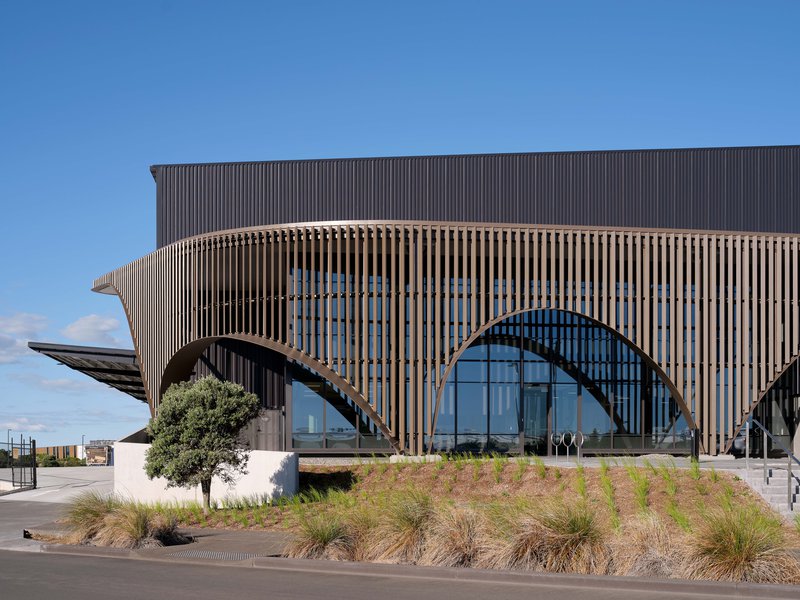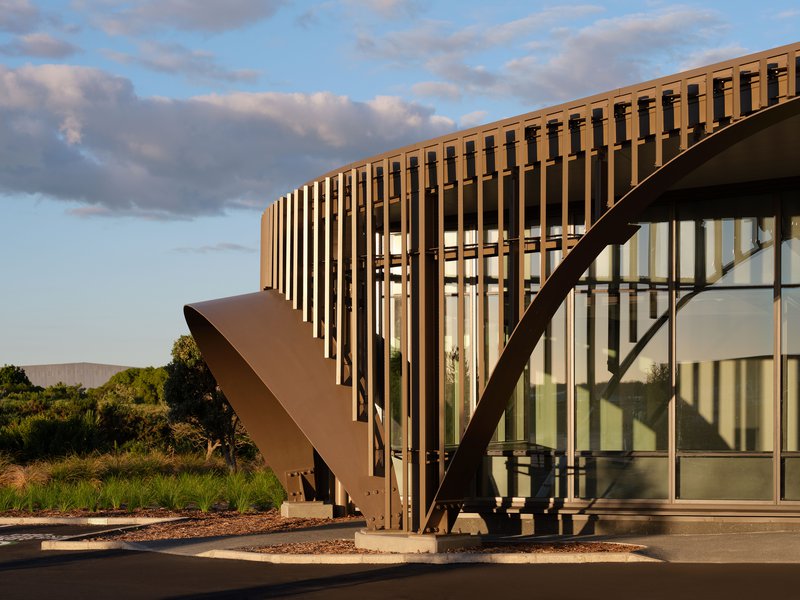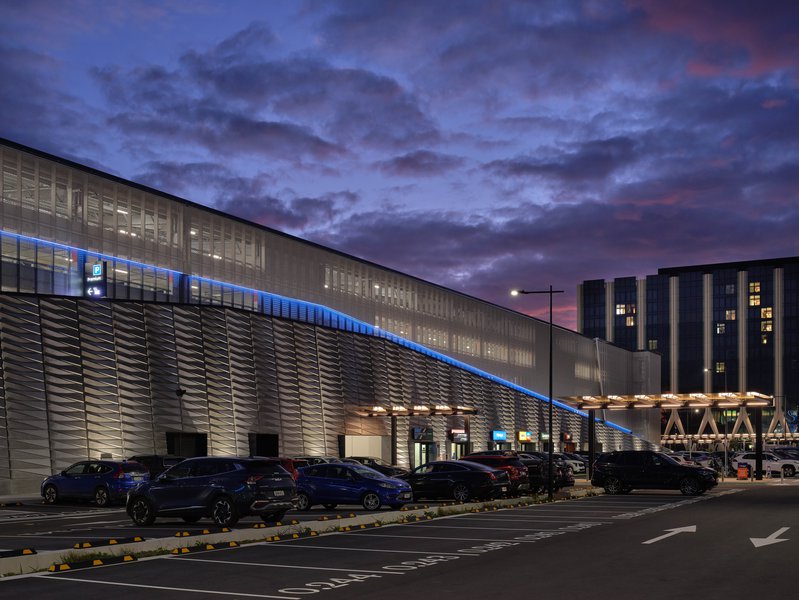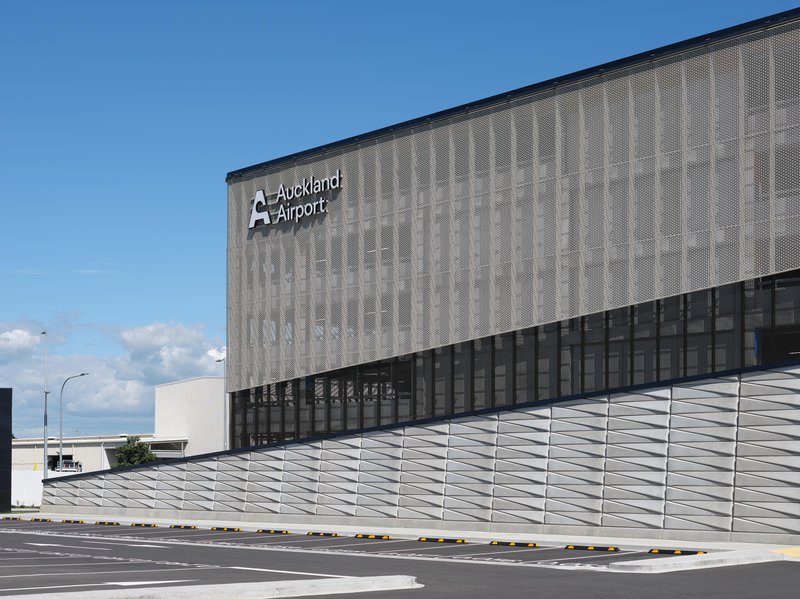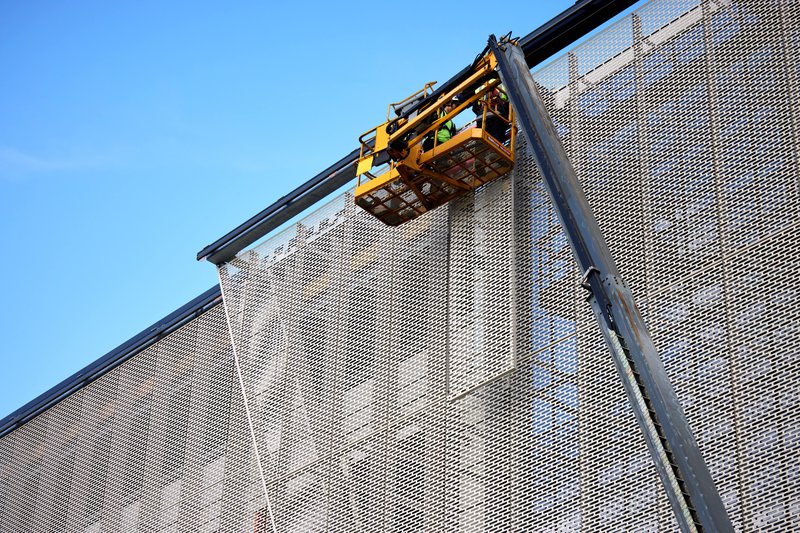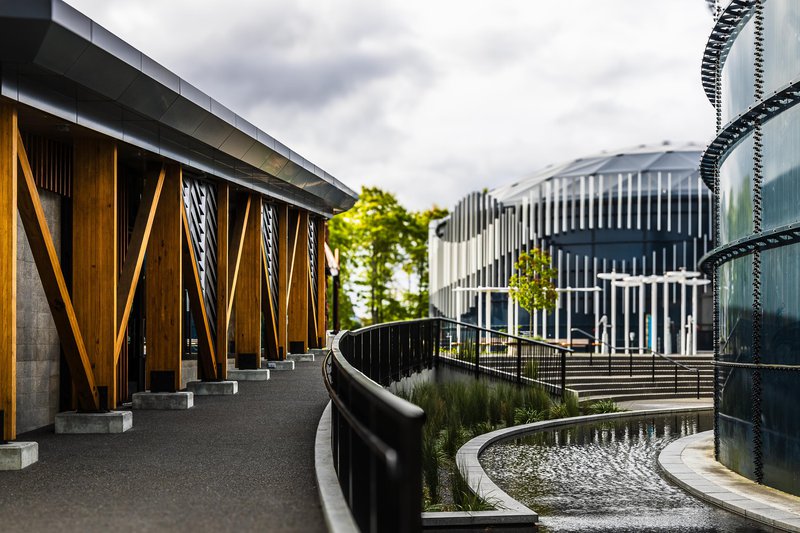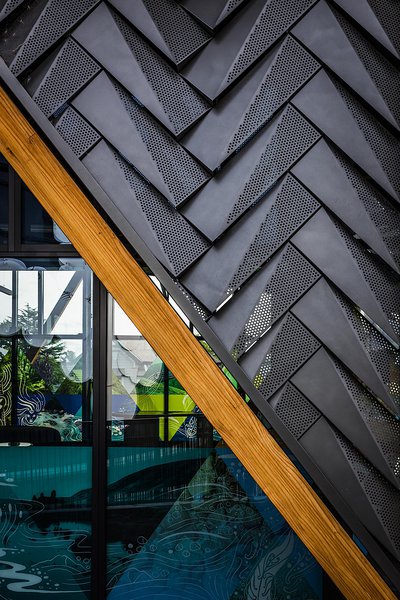“We’re doubling down on collaborations and working with architects, engineers and contractors to design smarter and build faster,” says Shane Hart, Business Development Manager at Insol, New Zealand’s market leaders in architectural façade treatment and design.
When Teulo last caught up with Shane, Insol was working on the new multi-storey car park at Auckland International Airport and preparing to release a new range of Dapple Perforated Metal patterns. “Those projects were really exciting milestones for us,” he says. “The Auckland Airport car park façade was a chance to demonstrate how large-scale prefabricated façade systems create a strong visual identity while delivering durability in a demanding environment. The finished project looks great, and it really is becoming a focal hub of the expansion that is happening out there. The Dapple range has also been very well received; the patterns have opened up new creative possibilities for designers who want to balance aesthetics with light, ventilation and screening. We’ve also completed a large car park project in East Tamaki, where we engineered the façade to perform as a vehicle impact barrier, saving the client thousands of dollars in secondary impact barriers and balustrades, and shaving weeks, if not months, off the construction programme. This is a great example of how a façade can be a value add, rather than just an aesthetic screen.”
For more than 20 years, the Insol team has brought their expertise with highly customised and complex façades to a range of commercial construction projects across New Zealand. This year the business is growing into the US and celebrating some high-profile international clients and collaborations. “What we’re finding is that the themes that resonate in New Zealand – design flexibility, prefabrication speed to site, and de-risking with wind tunnel testing – are even more relevant in the States. We’ve had some great feedback from early projects, and we’re building strong relationships with US architects and contractors. It’s still early days, but the response has shown us there’s real appetite for the kind of lightweight, high-impact solutions Insol offers.”
Insol’s industry-leading wind tunnel continues to attract attention and excitement from the industry, both here and overseas. “This has grown as a resource for architects and engineers, and it’s been fantastic to see more clients using it as part of the design process, helping them validate performance early and de-risk projects. We currently have a project on the go testing enormous fins for the US Consulate building in Rio de Janeiro; it’s the biggest mockup that we’ve tested in the wind tunnel so far, and it’s great to see that facility, which is unique to Insol and New Zealand, making an impact internationally.”
Bespoke canopies have become an increasing focus; over the last couple of years, the Insol team has been developing pre-engineered, streamlined canopy solutions. “We do a lot of bespoke canopies, and it seemed like we were starting from scratch every time, often involving several layers of consultants, engineers and trades. In response to that, we’ve been working to provide a simple specification-to-install solution, with time and labour savings that make it compelling for both refurbishment and new builds. The result is a pre-engineered solution that covers maybe 80% of canopy scenarios while still allowing for architectural flexibility, including different finishes, materials, and installation contexts.
Gallery
“A canopy system should do more than shield; our pre-engineered design delivers speed, simplicity, and standout architectural style. This is the breakthrough canopy system that truly makes it simple for both designers and builders. We have full Revit modelling, so designers can simply drag and drop designs into their models, and we can offer 2m-2.5m spans with no additional supports or posts required. We recently installed one of these at a project on Carr Road in Auckland, with a 75m long pre-engineered canopy right across the front; the architect and the Quantity Surveyer were both very impressed with the result.”
Another recent trend that Shane has noted is clients who are buying up older buildings and modernising them, rather than building from scratch. “This has sustainability benefits: reduced embodied carbon, faster ROI, and enhanced thermal performance. Insol’s façade screening systems are a great and easy way to reinvent the external aesthetic of the building and extend the life of a structure for a further 40-50 years, or more. The whole industry is working under a lot of economic pressure, and this is one way we can support them with a cost-effective solution that changes the look and feel of a building without breaking the bank. Façades are the low-hanging fruit of transformation, offering high impact, lower cost, and a quick turnaround.”
The industry is taking note of Insol’s high-impact results, with the team’s projects earning several nods in this year’s Best Awards, including the striking 25-27 Landing Drive Warehouse at Auckland Airport and the culturally significant Waiaroha - Heretaunga Water Discovery Centre in Hastings. “These projects were very challenging with unique geometries; at both sites the façades are an integral part of the overall design aesthetic. We’re really proud that they have been named as finalists in this year’s Best Awards. That recognition reflects not only the creativity of the architects we work alongside but also the way lightweight, prefabricated architecture can deliver high-impact results. Some of the best examples are in highly constrained urban sites, where modular, pre-engineered components allowed us to deliver design impact quickly, with minimal disruption.”
Gallery
Looking ahead, Shane and his team plan to keep pushing the boundaries of prefabrication and lightweight systems. “Our pre-engineered canopy solutions are getting a lot of traction, and we’re expanding that approach into other product families. We’re also keeping a strong eye on the benefits of retrofits, how we can improve energy efficiency with façade upgrades, and helping clients get more from the buildings they already have. It’s an exciting time for Insol. We feel like we’re just getting started.”
To learn more and connect with Shane, visit https://www.insol.co.nz/ follow Insol on LinkedIn, or send him a message at Shane@insolnz.co.nz. “We’re always happy to connect with architects and designers early in their projects, even just as a sense check to see if something is buildable and to learn how we could help make it happen.”
